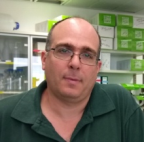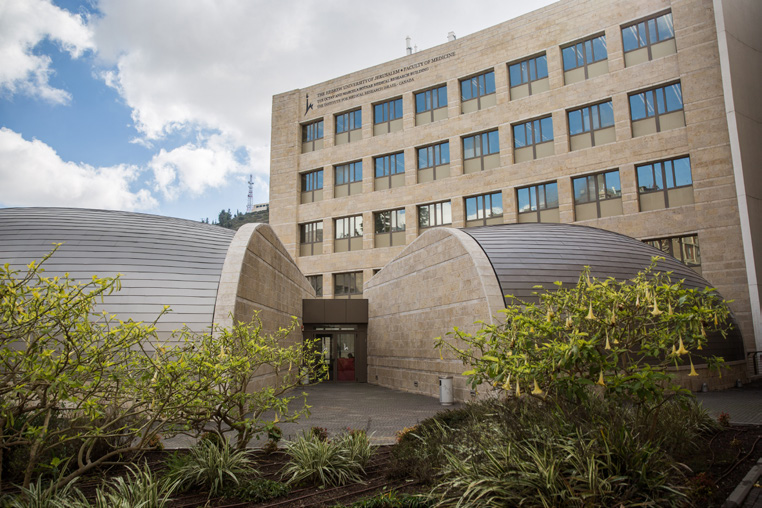 Name: Yoav Shaul
Name: Yoav Shaul
Title: Senior Lecture
Email: [email protected]
Tel: (+972)-2-6757619
Research Interests
Cancer metastasis constitutes a significant source of morbidity and mortality despite substantial developments in cancer therapeutics. The initiation of the metastatic cascade is accompanied by considerable alterations in cellular characteristics as they gain mesenchymal-like features, including eliminating cell-cell interaction with their neighbors. These cellular changes are regulated by the epithelial-mesenchymal transition (EMT) program, which transdifferentiates the carcinomas into mesenchymal-like cells via the activation of specific transcription factors. Although the regulatory mechanism underlying this phenotypic cancer program is well-studied, the metabolic processes' contributions are only poorly understood. Extensive studies over the years have identified cancer-dependent metabolic rewiring that is essential for malignant cell viability. Our specific interest lies in the unique metabolic processes that do not fall under the category of “proliferation-dependent” but instead regulate cancer cells’ transition to a more aggressive state. Previously, by analyzing MERAV, a large-scale gene expression database (http://merav.wi.mit.edu), we identified a set of metabolic genes whose expression is down-regulated during the EMT program. In my lab, we study the role of these enzymes in the EMT program with the primary aim to understand their mechanisms of action and the function of their metabolic products in tumor progression. Our rationale is that the more we know of the metabolites involved in tumor progression, the better we uncover novel mechanisms essential for this process.
Ten Selected Papers
*co-corresponding authors; #co-first authors
1.Khatib A, Solaimuthu B, Ben Yosef M, Abu Rmaileh A, Tanna M, Oren G, Schlesinger Frisch M, Axelrod JH, Lichtenstein M, Shaul YD. (2020) The glutathione peroxidase 8 (GPX8)/IL-6/STAT3 axis is essential in maintaining an aggressive breast cancer phenotype. PNAS 117(35):21420-21431
2.Abu Rmaileh A#, Solaimuthu B#, Tanna M#, Khatib A, Ben Yosef M, Hayashi A, Lichtenstein M, Shaul YD. (2020) Large-Scale Differential Gene Expression Transcriptomic Analysis Identifies a Metabolic Signature Shared by All Cancer Cells. Biomolecules 10(5): 701
3.Shaul, YD*, Yuan, B., Thiru, P., Nutter-Upham, A., McCallum, S., Lanzkron, C., Bell, GW, Sabatini, DM*. (2016) MERAV: a tool for comparing gene expression across human tissues and cell types. Nucleic Acids Res. 44: 560-6.
4.Shaul YD, Freinkman E, Comb WC, Cantor JR, Tam WL, Prathapan T, Kim D, Kanarek N, Pacold ME, Possemato R, Chen WW, Bierie B, Reinhardt F, Weinberg RA, Yaffe MB, Sabatini DM. (2014) Dihydropyrimidine Accumulation Is Required for the Epithelial-Mesenchymal Transition. Cell 158:1094–1109.
5.Shaul YD#, Gibor G#, Plotnikov A, Seger R. (2009) Specific phosphorylation and activation of ERK1c by MEK1b: A unique route in the ERK cascade. Gene & Dev 23 (15): 1779-90.
6.Shaul YD, Seger R. (2007) The MEK/ERK cascade: specific signals to multiple functions. Biochim Biophys Acta. 1773 (8): 1213-26.
7.Shaul YD, Seger R. (2006) ERK1c regulates Golgi fragmentation during mitosis. J. Cell Biol. 172 (6): 885-97.
8.Aebersold DM#, Shaul YD#, Yung Y#, Yarom N, Yao Z, Hanoch T, Seger R. (2004) ERK1c, a novel 42-kDa ERK demonstrates a unique mode of regulation, localization and function. Mol. Cell Biol. 24 (22): 10000-15.







 Collaborative Investigators
Collaborative Investigators


